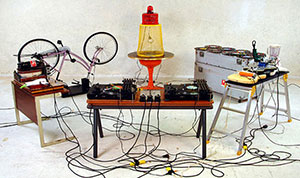This was the major electoral recommendation of the 2009 Citizens’ Parliament which assembled 150 randomly selected citizens drawn from every electorate nationally. (Disclosure Note: this event was funded and operated by the Foundation. Full findings are found here.
In practice, this serves to eliminate preference deals which are lightly understood and (as a result) not trusted by the vast majority of voters. There is no longer an ‘above the line’ vote for Upper House Candidates as voters gain the choice to preference as many or as few candidates as they choose. They gain confidence that a vote for Candidate A does not unknowingly translate into a vote for Candidate B because of a preferencing arrangement that they cannot reasonably be expected to be familiar with.
Above and beyond the benefit above, the Foundation advocates this reform as it accords with the views of the Australian research group. It adheres closely to the ideal that in situations where a representative is to be selected, that the voting structure should allow the most accurate possible expression of the voters’ wishes, which current Australian structures for most Houses do not.
Advantages of this Reform
The core advantage is one of clarity – the vote cast contributes only to those candidates enumerated by the voter. The current system allows for a vote to contribute to the election of an individual or party for whom the voter did not express a preference. J.F Wright also notes (in the Lijphart book referred below) that the current preferential system contributes to the high rate of invalid votes in Australian elections, which would be remedied by this type of change.
Arguments Against this Reform
The NSW Legislative Assembly example shows that voters tend not to use all their preferences, so that election results are quite different under this system. The “come from behind” scenario where a third placed candidate (on primary vote) secures a dominant volume of preferences to win the seat becomes far less likely. It is suggested that this does not accurately reflect the desires of the electorate.
Background and Origins
NSW and Queensland use OPV, while internationally it is used in Malta and the Republic of Ireland.
Questions for Further Study
What is the impact on improving representative diversity – does OPV lead to greater dominance for the two major parties?
What You Can Do
The Foundation is seeking researchers to explore the nature of preference arrangements in recent Federal elections. Get in touch here ![]()
Clarifications
None yet requested.
Further Readings
- NSW Electoral Commission

- Commentary from Antony Green

- Lijphart, A., Grofman, B., Choosing an Electoral System: Issues and Alternatives Praeger Publishers, 1984.
 Buy it online (Free Shipping Worldwide)
Buy it online (Free Shipping Worldwide)
 Image credit: Michael Leunig
Image credit: Michael Leunig




